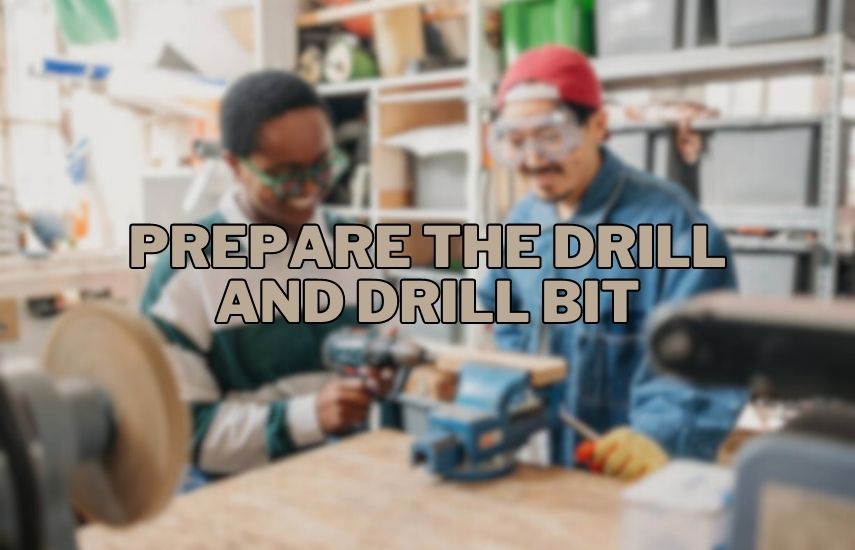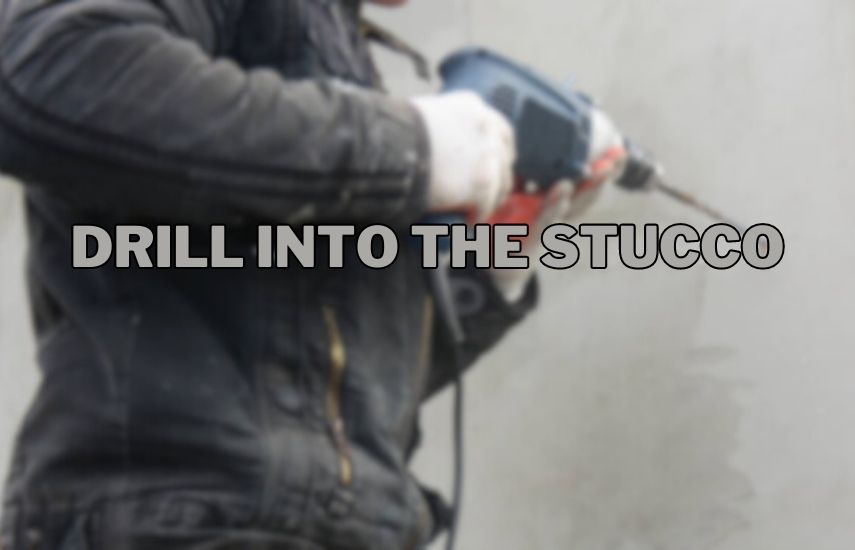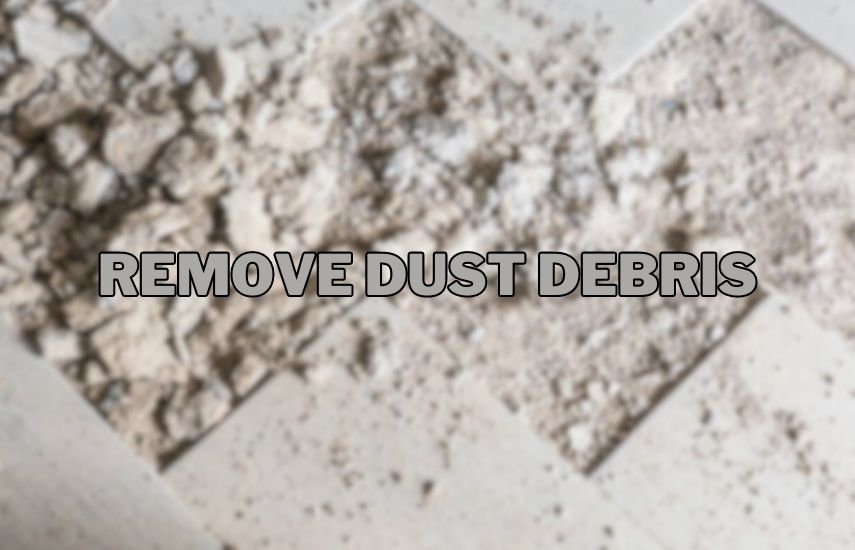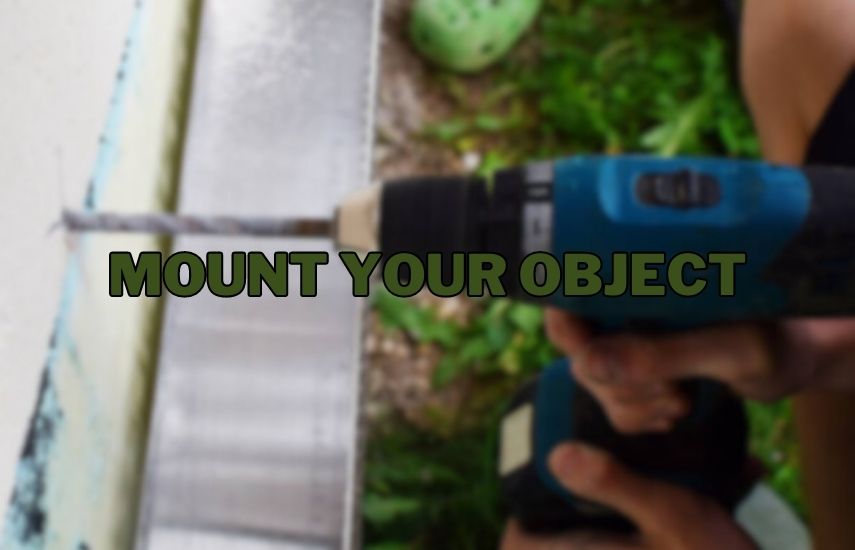When it comes to home improvement projects or installations, drilling into stucco can present unique challenges. Stucco, a durable and visually appealing exterior finish, requires careful handling to avoid damaging its surface. Whether you’re looking to mount security cameras, install outdoor lighting, or hang decorations, understanding the process of drilling into stucco correctly is essential for a successful outcome.
How to drill into stucco? To drill into stucco, use a carbide-tipped masonry drill bit. Mark the drilling spot, apply masking tape, and secure the drill bit in the chuck. Wear safety goggles and drill at a low speed, gradually increasing it. Maintain steady pressure and clear dust periodically.
In this Blog, we will walk you through the step-by-step process of drilling into stucco, providing you with the knowledge and confidence to tackle your projects effectively. From gathering the necessary tools to executing precise drilling techniques, we’ll cover everything you need to know to ensure a successful and damage-free experience.
Gather The Necessary Tools And Materials
By gathering these essential tools and materials, you will be well-prepared to start drilling into the stucco surface, making your project progress smoothly and safely. Always prioritize safety by wearing the necessary protective gear and following proper drilling techniques.
Drill
Select a high-quality drill that is capable of handling the task at hand. Ideally, choose a drill machine with a hammer drill function, as this feature helps in effectively penetrating stucco. The hammer drill function generates a pulsating motion, allowing the drill bit to break through the plaster more easily.
Masonry Drill Bit
Use a carbide-tipped masonry drill bit specifically designed for stucco or concrete. The carbide tip provides excellent durability and ensures clean and precise drilling. The size of the drill bit depend on the hole diameter you need to make. Ensure the drill bit is compatible with your drill’s chuck size.
Masking Tape
It is recommended to have masking tape on hand. Place the tape around the area where you plan to drill, creating a boundary that will minimize the chances of any accidental damage to the surrounding stucco.
Safety Goggles
Protecting your eyes is crucial when working with stucco. Wear a pair of safety goggles that provide adequate coverage and have impact-resistant lenses. This will protect your eyes ball from flying debris, dust, or other particles generated during drilling.
Dust Mask
As stucco drilling can create fine dust particles, it is important to wear a dust mask to prevent inhaling these particles. Select a cover designed for filtering out dust and ensuring it fits securely over your nose and mouth, providing proper respiratory protection.
Pencil Or Marker
Before drilling, use a pencil or marker to spot where you want to make the hole. This will help ensure accuracy and precision during the drilling process. Make a clear and visible mark on the stucco surface, allowing you to position the drill bit accurately and drill at the desired location.
Locate Studs Or Wall Framing

Locating studs or wall framing is a crucial step when it comes to drilling into walls, especially when dealing with surfaces like stucco. It ensures you find a solid, stable surface to anchor heavy objects or provide additional support.
Stud Finders
One of the most efficient tools for locating studs is a stud finder. These handheld devices use electronic sensors to detect changes in density behind the wall. They can identify the position of studs, electrical wires, and other hidden elements.
Follow the manufacturer’s instructions to calibrate the stud finder properly, then place it flat against the wall and move it slowly until it indicates the presence of a stud.
Tap On The Wall
If you don’t have a stud finder, you can rely on a manual method by tapping on the wall. Start by lightly tapping along the surface, listening for differences in sound. When you tap on an area without a stud, it will produce a hollow sound. However, tapping on a wall with a stud will create a more solid and dense sound. This method requires practice to distinguish between the different sounds accurately.
Visual Clues
Studs are regularly spaced apart, usually 16 or 24 inches in the center. Look for visual clues that may indicate the presence of studs. These can include visible nails or screws, seams in the drywall, or even electrical outlets or switches, as they are often attached to studs.
Measure From Corners
Another way to locate studs is by measuring from the corners of the wall. In most cases, studs are placed near the corners or openings of a wall. Measure approximately 16 or 24 inches horizontally from the corner and tap or use a stud finder to confirm the presence of a stud.
Follow Patterns
Studs are often installed in a predictable pattern. Once you locate one stud, you can typically find others by measuring or tapping at consistent intervals. Remember that studs are usually spaced at regular intervals, so if you find one, you can estimate the location of the adjacent studs.
Verify With Multiple Methods
It’s always a good idea to use multiple methods to verify the location of studs. For example, if you use a stud finder and it indicates the presence of a stud, double-check by tapping on the wall in that area. This helps to ensure accuracy and avoid potential errors.
Mark The Drilling Spot
Marking the drilling spot accurately is crucial to ensure that you drill into the correct location and avoid any mistakes or damage.
Prepare The Tools
Gather a pencil or marker, a tape measure or ruler, and a level if available. Having these tools handy will help you mark the drilling spot accurately.
Measure And Double-Check
Use a tape measure or ruler to Calculat distance from nearest edge or reference point to the stud or desired drilling spot. For example, if you want to mount a shelf and the stud is 6 inches from the left edge of the wall, measure 6 inches horizontally from the edge.
Mark The Horizontal Position
With the measurement in mind, place the tip of the pencil or marker on the wall at the measured distance. Make a small dot or short horizontal line to mark the spot. This indicates the horizontal position of the drilling spot.
Use A Level
If you have a level, it can be helpful to ensure that the mark is perfectly horizontal. Place the level against the wall, aligning it with the impact you made. Adjust the pattern if necessary to ensure it is level.
Mark The Vertical Position
Determine the desired height or vertical position for the drilling spot. Calculate the distance from the floor or ceiling, or use any other reference point you prefer. Place the tip of the pencil or marker at the measured distance vertically and make another small dot or short vertical line to mark the spot. This indicates the upright position of the drilling spot.
Double-Check And Confirm
Before proceeding:
- Double-check your measurements and marks to ensure accuracy.
- Use the tape measure or ruler to verify the distances and alignment of the effects.
- Adjust if necessary to make sure everything is correctly positioned.
Additional Markings
Depending on the project’s complexity, you may need to mark additional spots for multiple holes or fasteners. Repeat the measuring and marking process for each other site, ensuring proper spacing and alignment.
Prepare The Drill And Drill Bit

Preparing the drill and selecting the right drill bit is essential for successful drilling.
- Selecting the Drill Bit
- Determine the Material: Identify the material you will be drilling into. Common materials include wood, metal, or masonry (concrete or brick). The type of material will dictate the type of drill bit you need.
- Consider the Screw or Anchor Size: The size of the screw or anchor you plan to use will determine the drill bit size. Generally, the drill bit should be slightly smaller in diameter than the screw or anchor to ensure a snug fit.
- Choose the Drill Bit Type: Different drill bits are designed for specific materials. Here are some common types:
- Twist Drill Bits: These are versatile and suitable for drilling into wood, plastic, and metal.
- Masonry Drill Bits: These are designed for drilling into masonry surfaces like concrete or brick. They usually have a carbide or diamond tip for enhanced durability.
- Spade or Flat Wood Bits: These are ideal for drilling larger holes in wood.
- Forstner Bits: These are used for drilling clean, flat-bottomed holes in wood.
- Consult the Drill Bit Chart: To ensure the right match between the screw size and the drill bit, refer to a drill bit size chart or consult the instructions provided with the screw or anchor package. This will help you select the appropriate drill bit size.
- Preparing the Drill
- Secure the Drill Bit: Insert the selected drill bit into your drill’s chuck. Open the chuck, insert the drill bit, and tighten it securely. Ensure it is fastened properly to avoid any wobbling during drilling.
- Compatibility Check: Confirm that the shank of the drill bit matches the type of chuck on your drill. Most modern exercises have a keyless chuck that can accommodate various shank sizes, but if you have an older drill, it may require a specific type of shank.
- Check for Sharpness: Inspect the drill bit for any signs of dullness or damage. A sharp drill bit will ensure clean and efficient drilling.
- Safety Precautions:
- Wear Safety Gear: Wear safety goggles or glasses to protect your eyes from flying debris before drilling. If necessary, wear a dust mask to prevent inhalation of dust particles.
- Secure the Workpiece: Secure it to prevent it from moving during drilling. This can be done using clamps or by asking someone to hold it securely.
Protect The Stucco Surface
Protecting the stucco surface is crucial to prevent any accidental damage while drilling. Here are more details on how to effectively preserve the stucco surface using masking tape
Gather The Necessary Materials
Gather masking tape, scissors, and a clean cloth or sponge for cleaning.
Clean The Area
Before applying masking tape, ensure the stucco surface is clean and free from dust, debris, or loose particles.
Cut the Masking Tape
Cut a slice of masking tape to cover area around the marked spot. It should extend a few inches beyond the marked scope to provide sufficient coverage.
Position And Apply The Masking Tape
Carefully position the masking tape around the marked spot, ensuring it adheres firmly to the stucco surface. Start by attaching one end of the tape to the surface near the mark and then unroll it while pressing it firmly against the stucco. Smooth out any wrinkles or air bubbles as you go.
Overlapping The Tape
If the marked spot is relatively large or irregularly shaped, you may need to apply additional strips of masking tape, overlapping them slightly to ensure complete coverage.
Press And Secure The Tape
Once the masking tape is in place, press it firmly against the stucco surface to ensure good adhesion. Run your fingers or a clean cloth along the edges of the video to ensure it is securely attached to the stucco.
Verify Proper Coverage
Step back and double-check that the masking tape entirely covers the marked spot. Ensure that no stucco is exposed near the drilling area.
Applying masking tape creates a protective buffer between the drill and the stucco surface, reducing the risk of cracking or chipping. The video acts as a cushion and absorbs some of the impact during drilling, minimizing potential damage.
After completing the drilling process:
- Remove the masking tape carefully.
- Pull it away from the stucco at a 45-degree angle to prevent additional damage.
- Inspect the stucco surface for any signs of wear and, if necessary, perform any required touch-ups or repairs.
Drill Into The Stucco

Drilling into stucco requires precision and careful execution to avoid damaging the surface.
Put On Safety Gear
Before drilling, prioritize safety by wearing protective goggles to shield your eyes from debris or dust. A dust mask can help prevent inhalation of particles generated during drilling.
Position The Drill
Hold the drill perpendicular to the wall, ensuring it is aligned with the marked spot. This will help you maintain a straight and accurate drilling path.
Start With A Low Speed
Set the drill to a low speed or the recommended speed for drilling into stucco. Starting at a low rate reduces the risk of the drill bit slipping or wandering, allowing for better control and accuracy.
Begin Drilling
With the drill adequately positioned, place the drill bit against the stucco surface at the marked spot. Apply steady pressure on the drill while maintaining control over the tool. Start the drilling process by gently pressing the trigger or power button.
Gradually Increase Speed
As you drill, gradually increase the speed of the drill while still maintaining a firm grip and steady pressure. The increased rate will help the drill bit cut through the stucco more efficiently. However, avoid using excessive force, as it can cause the bit to bind or damage the plaster.
Monitor Progress
Pay close attention to the drilling process as you proceed. Keep an eye on the depth of the hole and the resistance encountered. Adjust the pressure and speed accordingly to ensure smooth and controlled drilling.
Clear Debris
Occasionally, partially withdraw the drill bit from the hole to remove accumulated dust or debris. This will help maintain optimal drilling performance and prevent clogging.
Complete the Drilling Process
Continue drilling until you reach the depth or complete the necessary hole for your specific purpose. Be mindful not to dig too deep and risk damaging any underlying structures or utilities.
Withdraw the Drill
Once drilling is complete, release the trigger or power button and carefully withdraw the drill bit from the stucco surface. Be cautious not to damage the surrounding area as you remove the drill.
Apply Firm But Gentle Pressure
When drilling into stucco, finding the right balance between applying sufficient pressure and avoiding excessive force is essential.
Firm Grip And Stance
Ensure that you have a firm grip on the drill and maintain a stable stance. This will give you better control over the tool and help you apply consistent pressure during drilling.
Let The Drill Bit Do The Work
Remember that the drill bit is designed to cut through the stucco material. Avoid forcing or pushing the drill too hard. Instead, allow the drill bit to gradually penetrate the stucco while you maintain a steady and controlled pressure.
Maintain A Consistent Pressure
Apply a firm but gentle pressure on the drill as you drill into the stucco. The goal is to maintain a steady and consistent pressure that allows the drill bit to cut through the material smoothly. Avoid fluctuating or uneven pressure, as it can lead to an irregular hole or cause the stucco to crack.
Pay Attention To Feedback
As you drill, pay attention to the feedback you receive from the drill. Observe how the drill bit feels as it penetrates the stucco. If you encounter increased resistance or notice the drill slowing down, it may indicate that you are exerting too much force. In such cases, ease up on the pressure to avoid damaging the stucco.
Monitor The Drilling Process
Keep a close eye on the progress of the drill bit as it advances into the stucco. Monitor the depth and the behavior of the stucco surface. If you notice any signs of cracking or the plaster starts to chip excessively, immediately release the pressure on the drill and reassess the drilling technique.
Adjust Pressure As Needed
Depending on the hardness of the stucco and the drill bit you are using, you may need to adjust the pressure applied slightly. Softer plaster may require less stress, while harder stucco may require more. Pay attention to the behavior of the drill and the stucco surface to determine the optimal pressure.
Remove Dust Debris

Removing dust debris during drilling is crucial for maintaining optimal drilling performance and ensuring a clean hole. Here are more details on how to remove dust debris:
Pause The Drilling
Periodically pause the drilling process to allow for the removal of accumulated dust debris. This is especially important when drilling into stucco, as the material generates a significant amount of dust.
Withdraw The Drill Bit
Carefully withdraw the drill bit from the hole, partially or entirely, depending on the debris present. Ensure the drill is turned off or the trigger is released before removing the bit.
Clear The Dust
Use a soft brush, a clean cloth, or a compressed air canister to remove the dust from the hole. Gently brush or wipe the hole’s interior to remove any loose debris. You can also use a small vacuum cleaner attachment to suction out the dust.
Clear The Drill Bit
Examine the drill bit and remove any dust or debris that may have gather during drilling. This can be done by brushing or wiping the bit with a cloth or using compressed air to blow away the dust.
Repeat If Necessary
If the hole is deep or the drilling is particularly dusty, you may need to repeat the process of removing dust debris at intervals during the drilling. This ensures that the drill bit can continue to cut through the stucco effectively and reduces the risk of clogging or inefficient drilling.
Resume Drilling
Once the dust debris has been cleared, reposition the drill bit in the hole and resume drilling. Maintain the proper drilling technique and pressure as described earlier.
Insert Anchors Or Screws
After drilling the hole in the stucco, the next step is to insert anchors or screws, depending on your specific project requirements.
Remove The Masking Tape
Before proceeding, carefully remove the masking tape applied to protect the stucco surface during drilling. Peel it off slowly and smoothly, taking care not to disturb the surrounding area.
Select The Appropriate Anchors Or Screws
Choose the appropriate anchors or screws based on the weight and type of object you plan to mount on the stucco surface. Ensure that the anchors or screws are suitable for stucco applications and can provide the necessary support.
Prepare The Anchors
If you use anchors, follow the manufacturer’s instructions to prepare them for insertion. This may involve screwing in any provided screws or expanding the anchors using a specific tool. Ensure that the anchors are correctly designed before proceeding.
Insert The Anchors Or Screws
Align the anchor or screw with the drilled hole in the stucco. Gently insert the anchor or screw into the hole, applying even pressure. Twist the anchor or screw clockwise to engage it with the plaster and allow it to grip securely.
Tap Anchors (If Applicable)
If you use expandable or hollow wall anchors, gently tap them into the stucco using a hammer. Use light taps to avoid damaging the plaster. Tap until the anchor is flush with the stucco surface.
Tighten Screws
Using screws directly into the stucco without anchors. Apply moderate pressure while turning the screw clockwise to ensure a secure hold.
Test Stability
After inserting the anchors or screws, give them a gentle tug or shake to ensure they are securely in place. They should feel firm and stable. If there is any noticeable movement or insecurity, you may need to reinsert or tighten the anchors or screws.
Always follow the specific instructions the anchor or screw manufacturer provides for the best results. They may have additional steps or guidelines specific to their product.
Correctly inserting anchors or screws into the drilled hole ensures a secure attachment for your mounted objects. This provides stability and strength, allowing you to hang or install items on the stucco surface.
Mount Your Object

Once you have inserted the anchors or screws into the stucco, you can mount your object securely.
Position The Object
Align the object you wish to mount with the anchors or screws in place. Ensure that it is positioned correctly and level according to your desired placement. Take a moment to double-check the alignment and make any necessary adjustments.
Align Mounting Holes
If your object has pre-drilled mounting holes, align them with the anchors or screws in the stucco. This ensures that the thing will be secured appropriately and balanced.
Attach Fasteners
Depending on the type of object you are mounting, use the appropriate fasteners such as screws, bolts, or hooks. Insert the pins through the mounting holes in the thing and into the anchors or screws in the stucco.
Tighten Fasteners
Using a screwdriver, wrench, or appropriate tool, tighten the fasteners until they are snug. Be careful not to overtighten, as this can strip the threads or damage the object or stucco. Ensure the pins are secure enough to hold the thing firmly.
Test Stability
Give the mounted object a gentle shake or tug to test its stability. Ensure that it feels secure and does not wobble or move excessively. Adjust the fasteners or reposition the object as needed if there is any noticeable instability.
Level The Object
If your object needs to be level, use a level tool to position it correctly. Make any necessary adjustments to achieve the desired level position. This is especially important for shelves or artwork that must be evenly balanced.
Verify Stability And Functionality
Step back and observe the mounted object from different angles. Ensure that it is secure, level, and functions as intended. Check that any moving parts, hinges, or mechanisms work smoothly.
Test Weight Capacity (If Applicable)
If your object is designed to hold weight, such as a shelf, test its weight capacity by gradually adding weight and monitoring its stability.
Conclusion (How To Drill Into Stucco)
How To Drill Into Stucco? To drill into stucco, use a masonry drill bit. Mark, the drilling spot, secure the drill bit, and wear safety goggles. Start drilling at a lower speed, gradually increasing it. Maintain steady pressure and clear dust periodically.
Drilling into stucco requires a few key steps to ensure success. You can effectively drill into stucco by using a masonry drill bit, marking the drill spot, securing the drill bit, wearing safety goggles, and maintaining a steady pace with moderate pressure; you can effectively drill into stucco without causing damage.
Remember to clear dust periodically and exercise caution throughout the process. Following these guidelines will help you achieve your desired outcome while preserving the integrity of the stucco surface.









